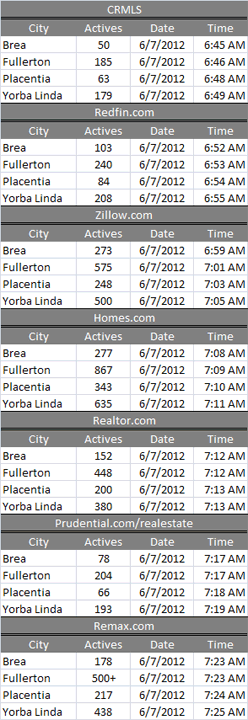Lower Inventory Drives Jump in Homebuying
A jump in home sales this summer indicates that Orange County’s housing slump may finally be coming to an end. According to housing tracker DataQuick Information Systems, sales were up 25.7% in July 2012 compared to July 2011 – that’s the biggest percentage gain the local market has seen in approximately 40 months. And, the boom isn’t isolated to a single area. According to the data, home buying rose in 80% of Orange County zip codes.
Market observers speculate that lower inventory – particularly of distressed properties that have been discounted in price – is driving the jump in purchases. Foreclosures, for example, accounted for only 13.2% of recent Orange County transactions. When compared to a historical average of 26% per month for the past four-and-a-half years, this indicates a significant decrease in supply. And, it’s that lack of supply that’s likely driving up prices.
While demand is highest for homes priced under $300,000, the median price for an Orange County home was $450,000 in July. And, thanks to a stabilizing market, low interest rates, and an increase in “normal” (that is, non-distressed) sales and purchases, most experts expect the upswing in real estate sales and prices to continue.
"Homebuyer confidence has returned ... and low borrowing rates and rents are attracting investment at higher than normal levels," Orange County Association of Realtors President Maria Elena Banks told The Orange County Register. "Buyers are jumping off (the fence) to follow investors, lured by low rates and the sense that prices will rise in the future as the economy improves."
Based on the data, it seems now may be the best time to buy or sell a home in years.
 want to go see it now! Your agent says let me look up the property to call the home owner. Sign on to CRMLS to look up the property on the Multiple Listing Service (MLS) and get the phone number and staring right at the top of the page is "PENDING SALE". Your shoulders visibly sag and you tell your client your dream home is already sold and everyone is disappointed.
want to go see it now! Your agent says let me look up the property to call the home owner. Sign on to CRMLS to look up the property on the Multiple Listing Service (MLS) and get the phone number and staring right at the top of the page is "PENDING SALE". Your shoulders visibly sag and you tell your client your dream home is already sold and everyone is disappointed. I can’t tell you how many times this happens. Unfortunately this is one problems looking for homes using internet homes for sale websites. The only properties you can see on these websites are the active listings. What does the word active listing mean? An active listing is any property listed on our MLS that is NOT a closed sale. Active listings include; Pending Sales, Taking backup offers, hold do not show, properties do fall out after a contract is signed to purchase that is the reason they stay active.
I can’t tell you how many times this happens. Unfortunately this is one problems looking for homes using internet homes for sale websites. The only properties you can see on these websites are the active listings. What does the word active listing mean? An active listing is any property listed on our MLS that is NOT a closed sale. Active listings include; Pending Sales, Taking backup offers, hold do not show, properties do fall out after a contract is signed to purchase that is the reason they stay active. 



